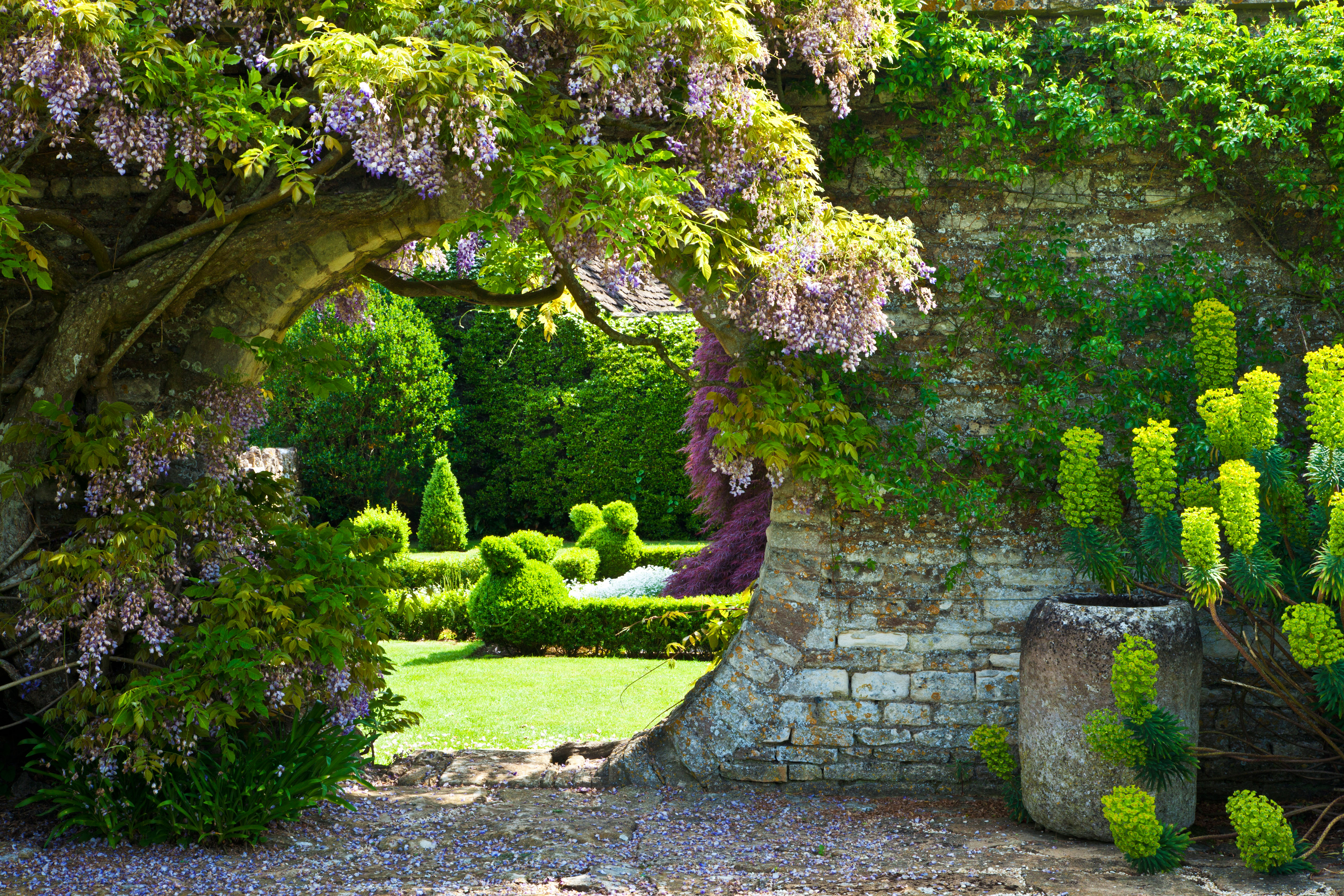U2's Adam Clayton: Guitarist, rock god and visionary gardener
Taking on a historic estate with 17 acres of gardens and landscape at the age of 28 is no mean feat, but Adam Clayton did just that when he bought on Danesmoate — and he also had the foresight and vision to plant thousands of trees and shrubs, restoring vistas and bringing back life and colour to this beautiful river valley. Jane Powers tells the story, with pictures by Jonathan Hession.
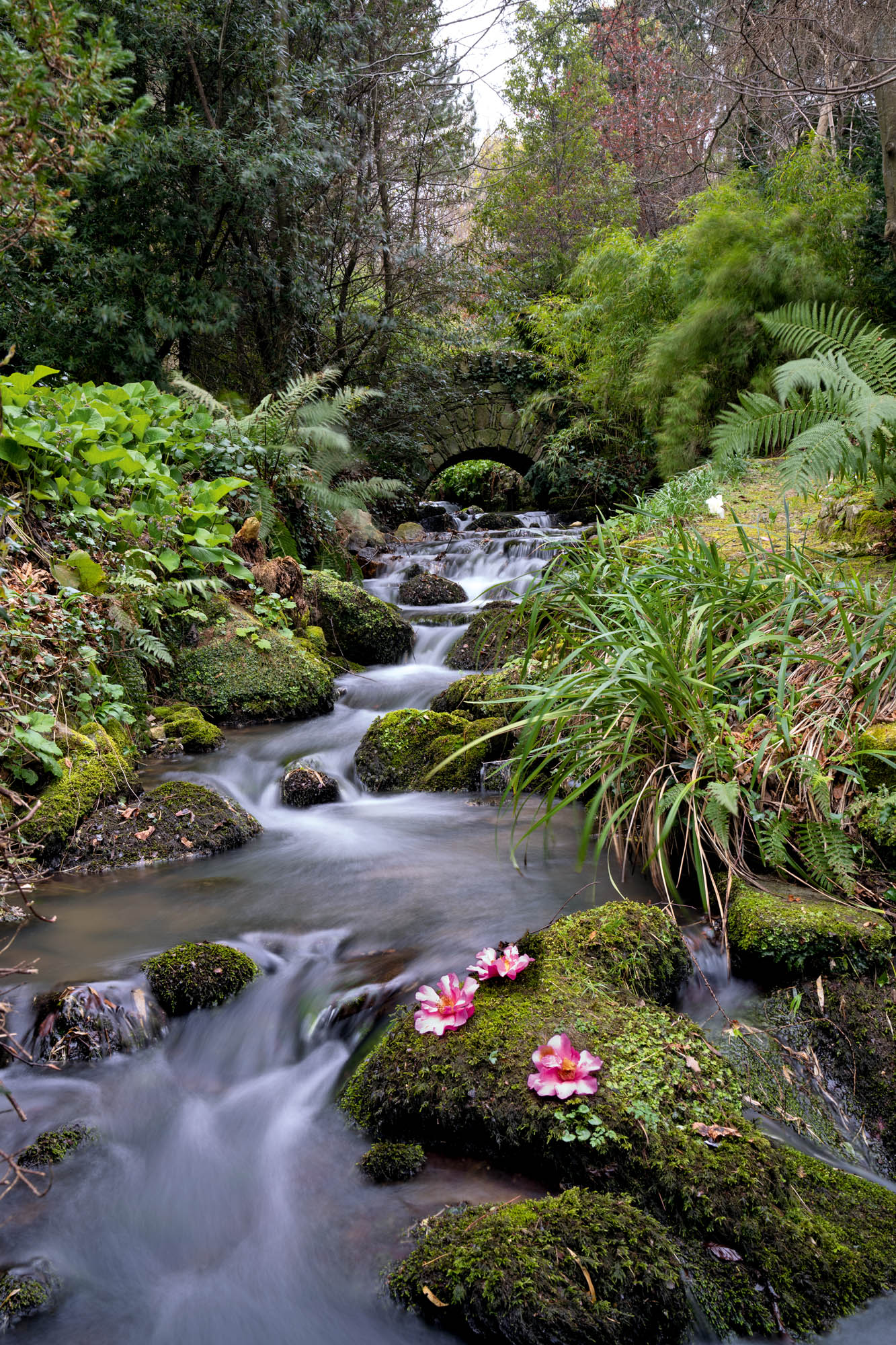
‘We used to sneak in the back to smoke and charm girls,’ says Adam Clayton, bass guitarist of U2. That was in the 1970s, when he was a boarder at St Columba’s College in Dublin. Little did he guess that, in the following decade, he would become the owner of that same estate at the foot of the Dublin Mountains.
In 1986, the band rented the house — which was standing empty — to record their fifth studio album, The Joshua Tree, in the acoustically gorgeous, lofty drawing room. The then owner, remembers Mr Clayton, had said: ‘If anyone wants to buy the house at the end of the recording, I’ll subtract the rental from the price.’ So, in 1988, aged 28, he found himself in possession of Danesmoate: a large Georgian house, numerous ancillary buildings (including a dovecote and a two-seater privy) and 17 acres of gardens, pasture and river valley — all in need of serious attention. Although only seven miles from Dublin city, the location was remote and quiet.
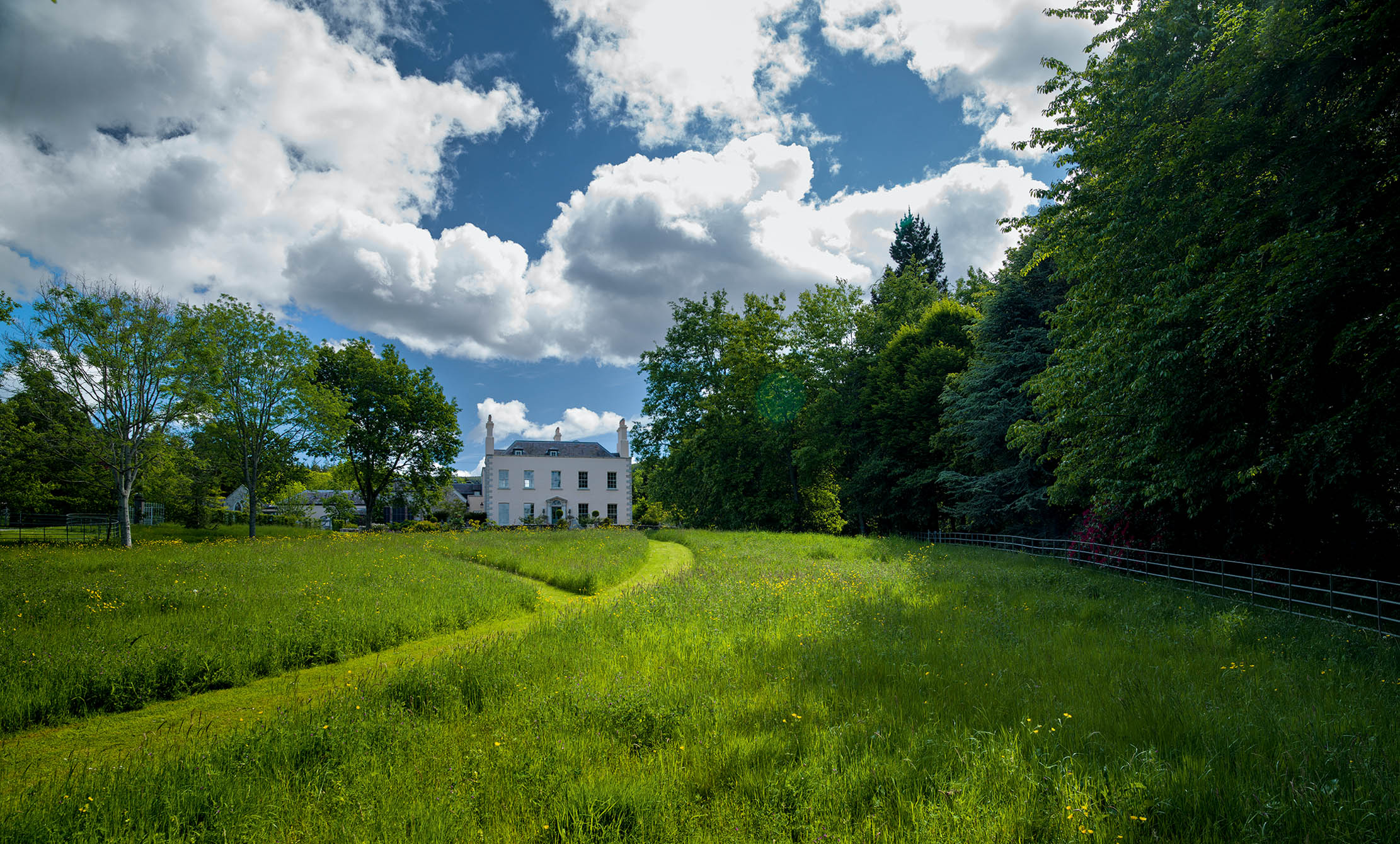
That would change in the coming years with the arrival of Dublin’s ring road, the M50, which now passes close to the property’s boundary. When he bought Danesmoate, Mr Clayton knew the road was coming and that mitigating action was essential. ‘The one thing I knew early on was that I’d need trees.’ He hired Neil Murray, a designer and nursery owner based nearby. They took out all the ‘over-mature timber and all the laurel that had overrun the place’ and set to work planting trees — about 4,000 of them — and creating vistas. Wooded areas were replanted with oak (‘a lot of oak!’), beech, sycamore, ash, birch and various conifers. Dr Murray, a keen and well-connected plantsman, laced the woodlands with choice trees, including trial specimens from the Royal Botanic Garden, Edinburgh, and Windsor Great Park.
Dr Murray arranged a visit to the fabulously extravagant gardens at Mount Congreve in Waterford, famous for the brilliant displays of acid-loving plants, such as camellias, rhododendrons and magnolias. There, on the banks of the River Suir, the industrialist and garden lover, Ambrose Congreve, planted not in twos or threes, but in 10s and 20s.
Mr Clayton was stirred by the sight. ‘After that, we started to increase the camellias here’ — they now shine out from the drive and woodland in early spring. And he admits unashamedly: ‘We went a bit bonkers on the magnolias.’ There are 50 varieties at Danesmoate, many planted in multiples.
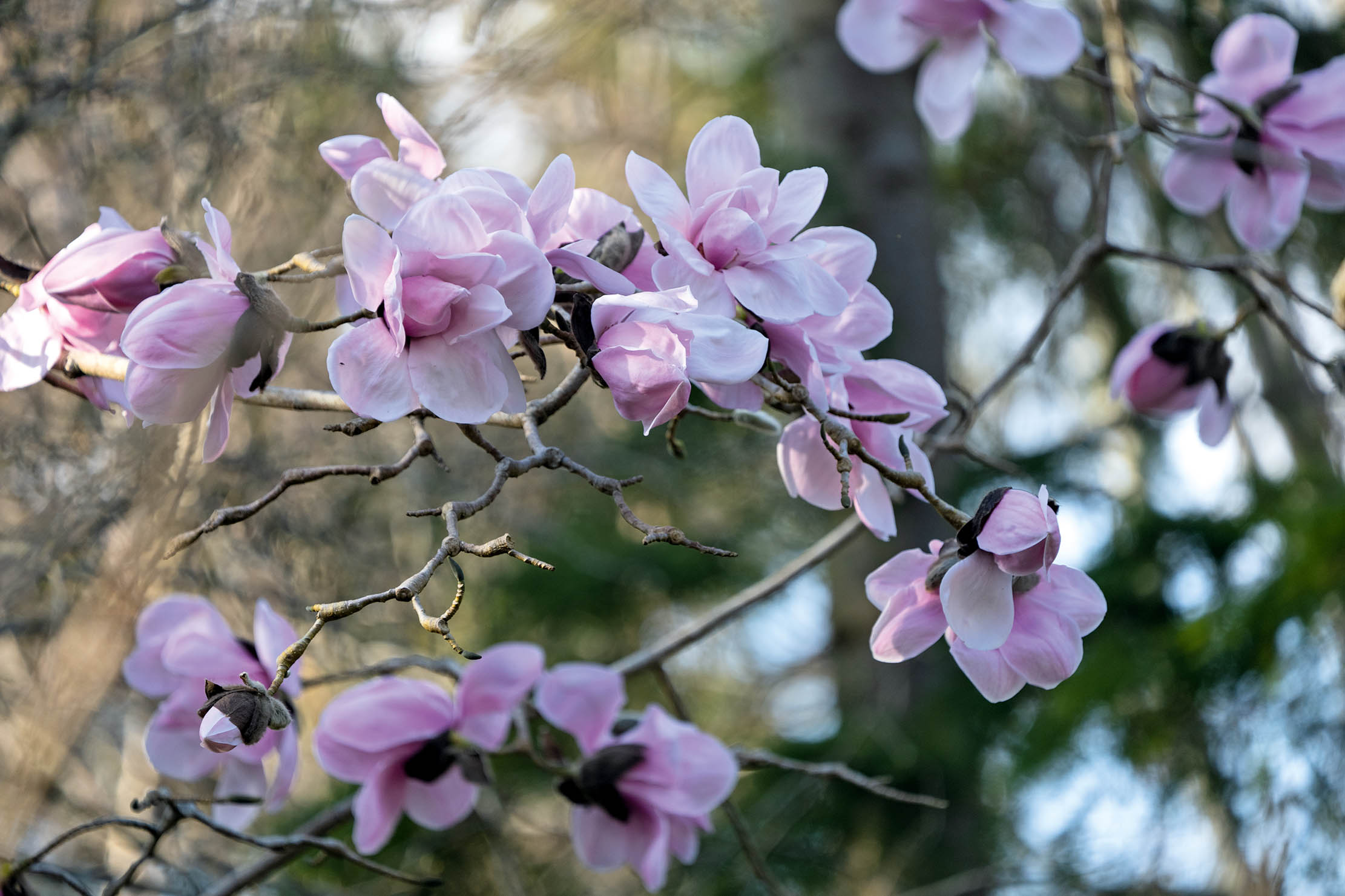
They punctuate the more formal gardens near the house and are threaded through the woodland and along the banks of the Little Dargle River, which meanders for half a mile along a small valley. They are a thrilling sight when their thousands of furry buds crack open to reveal the splendid flowers. Among them are the decadent, luxuriously petalled, deep-rose Magnolia campbellii ‘Darjeeling’, the dainty, pristine-white M. kobus, and the cheerfully luminous ‘Yellow Bird’, bred at Brooklyn Botanic Garden in New York, US.
Mr Clayton is ‘a big fan of rhododendrons’. Seeing them growing wild in the Himalayas made him appreciate their nobility. They were in a different league from the feral Rhododendron ponticum growing ‘in bockety ditches in Ireland’. There are close to 100 varieties here, including near-tender species, such as the scented R. griffithianum.
Sign up for the Country Life Newsletter
Exquisite houses, the beauty of Nature, and how to get the most from your life, straight to your inbox.
Danesmoate has a special microclimate: the tree planting has created welcome shelter and the river helps see off cold air. Tree ferns (Dicksonia antarctica) thrive in the moisture-laden environment, as does the European chain fern (Woodwardia radicans). The growth rate is super-charged: a Caucasian wingnut (Pterocarya fraxinifolia) and a Chilean southern beech (Nothofagus dombeyi) are 50ft tall; a towering coast redwood (Sequoia sempervirens) is so stout that it takes two people to hug it.
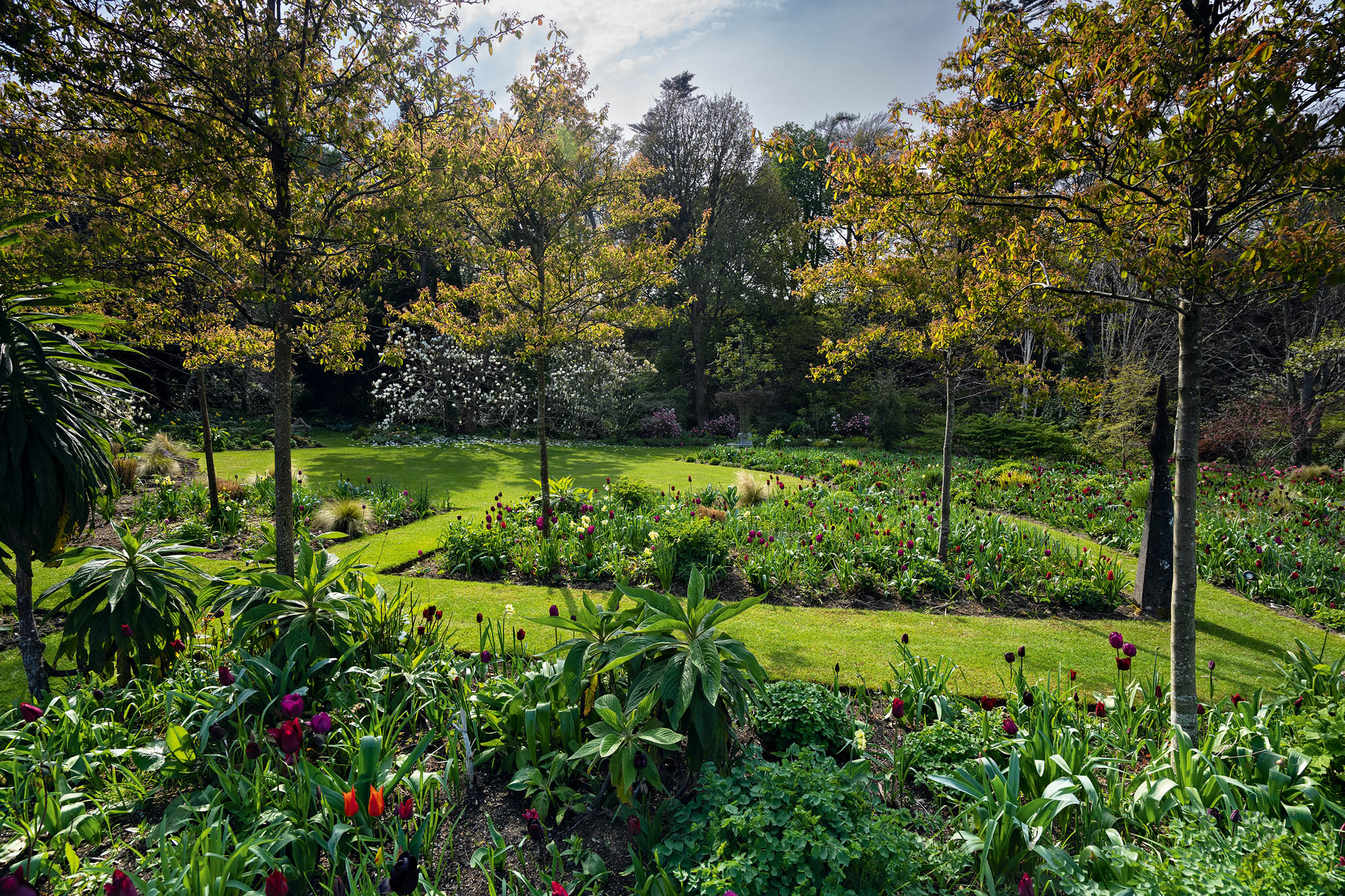
Although much of the planting dates from the past three decades, there are fine trees from the garden’s earlier days: venerable beeches with elephantine trunks; great sycamores with robust, kindly presences; ancient yews of unknown vintage; sinuous, smooth-barked rhododendrons. There are remnants of a celebrated Picturesque garden (see box) including rustic stonework follies and — on the river — bridges and cascades. Jim Barcoe, a talented stonemason, added more bridges and stone features and helped to stabilise and restore the stonework along the banks. Additional weirs and falls have livened up the water’s journey, increasing the volume of its pleasant splashing. Small trout dart about in the water, as dippers and herons forage in the shallows. Wildlife is abundant at Danesmoate: otters have been spotted, sparrowhawks nest in one of the pines and buzzards are omnipresent.
The house is fronted by a meadow, which is maintained as a semi-natural grassland habitat and is mobbed by butterflies and other invertebrates. In spring, pheasant’s-eye and Wordsworth’s daffodils (Narcissus pseudonarcissus) brighten the sward, but, for the rest of the year, it is the preserve of buttercups, clovers, vetches, knapweed, woundwort and other natives.
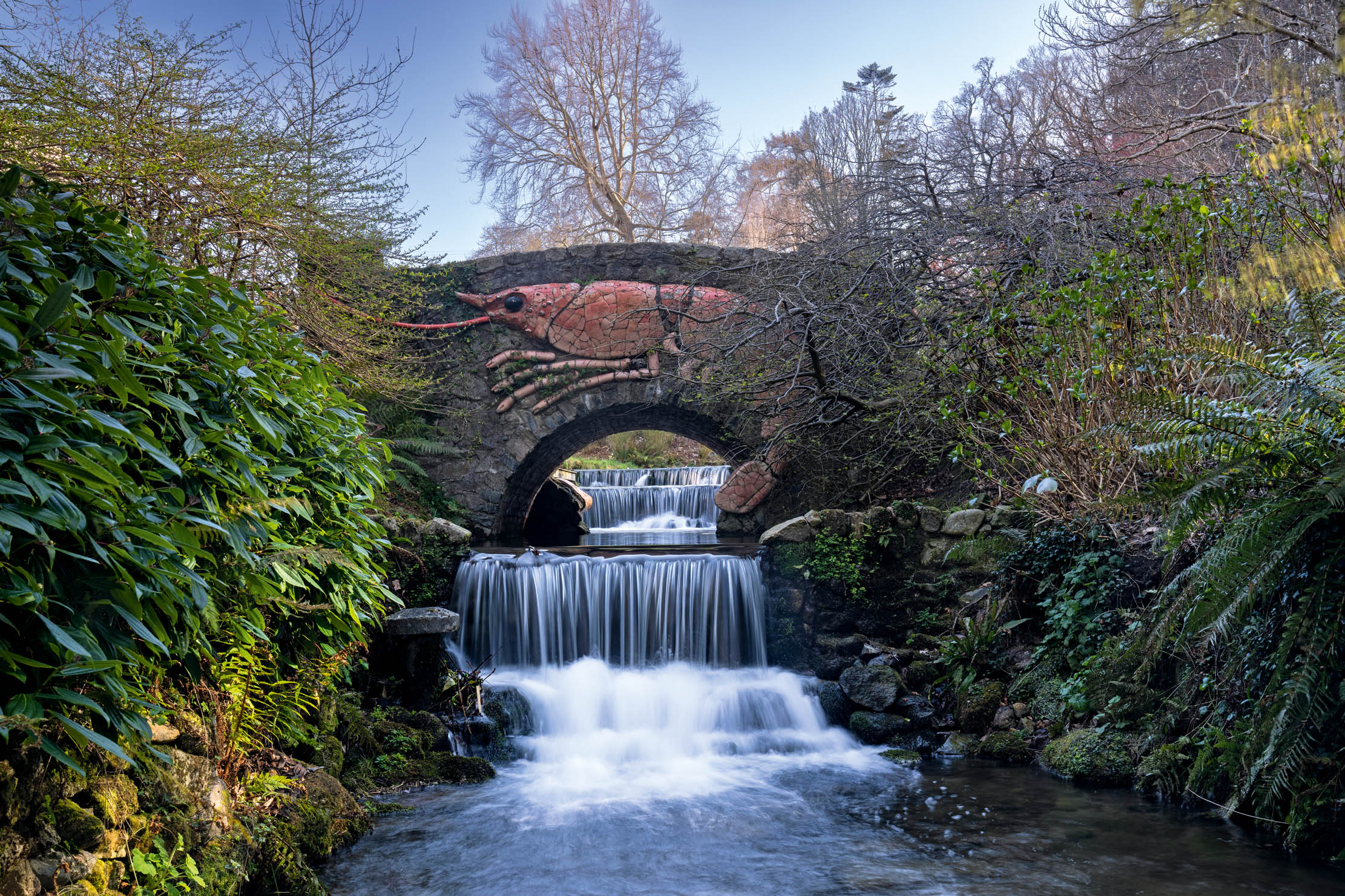
Around the house, a framework of highly structured garden rooms was created by British designer Elizabeth Staveley. In recent years, these have been populated by an intensively managed menu of perennials and bulbs. June Blake, whose beautiful Blessington garden is half an hour away, has designed much of the planting: late spring kicks off with thousands of richly toned tulips and proceeds into a feast of alliums. As the year progresses, an exuberant parade of perennials fills the beds. Head gardener Darragh Stone, who has been here since 2020, has devised some of the newer planting. The team of four gardeners (including two part time) is bolstered by Joe Mulligan, denizen of Danesmoate for more than 30 years and who knows every inch of the terrain.
The plant inventory at Danesmoate continues to expand with interesting woody plants and other gems. A collection of Irish cultivars is also growing, and includes the pretty little blue-striped Omphalodes ‘Starry Eyes’, which arose at Woodtown Park, a couple of miles down the road; and the variegated holly ‘Lady Valerie’ which was discovered at Dargle Cottage in Enniskerry by Dr Murray.
Plans for the immediate future are centred on the 19th-century walled garden, which will soon have an elegant glasshouse and orangery as its focal point. A newly acquired five-acre field is being developed as a woodland with meadowy clearings. Mr Clayton approves heartily of rewilding and adding more trees to his estate. He looks forward to ‘tree planting for the next 40-odd years’.
The gardens at Danesmoate, Dublin, are open by appointment for groups. Email head gardener Darragh Stone (gardendm@icloud.com)
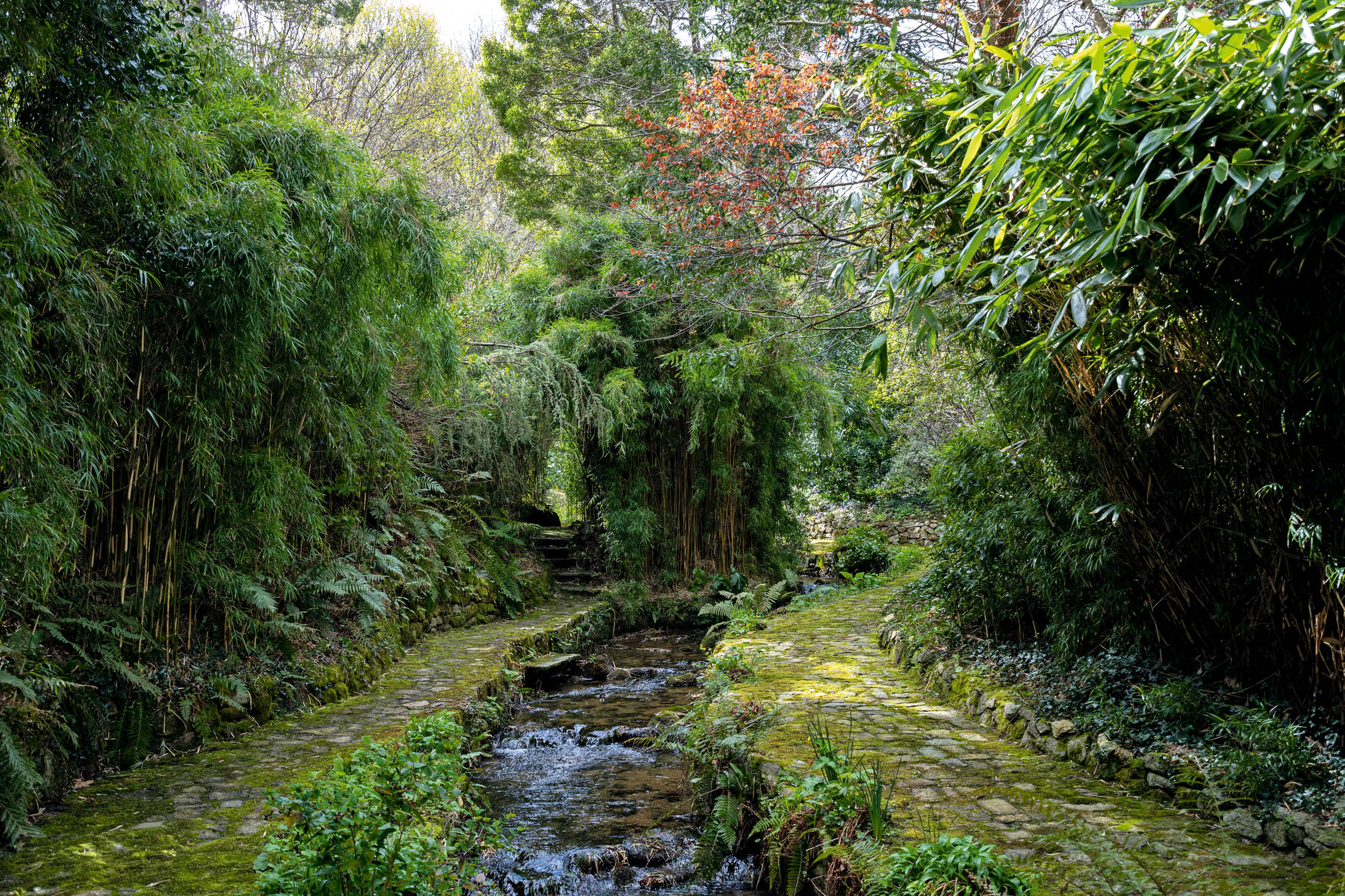
The history of Danesmoate
The oldest parts of the garden were created between 1766 and 1802 by Capt William Southwell and his wife, Julia Ponsonby, when the site was known variously as The Glen, Glen Southwell, New Dargle, Little Dargle and later, Glynsouthwell.
The name Danesmoate was first used in the 1950s. Capt Southwell’s was an aristocratic, military family and his wife’s relatives included formidable garden makers, such as the 1st Viscount Duncannon of Bessborough in Co Kilkenny and the 5th Earl of Meath, whose Anglo-French gardens at Killruddery in Co Wicklow survive. Julia’s first cousin married Sir William Fownes of Woodstock, Kilkenny — another demesne known for its formal gardens.
The Southwells’ garden was in the fashionable Picturesque style, the untamed power of the ‘wilderness’ celebrated in carefully tweaked vistas. Gothic buildings and other rustic features added to its drama. At Glen Southwell, the steep valley with its tumbling river and mossy boulders lent themselves admirably to the arousing of awe.
The place was widely admired, not least by the Revd John Wesley (founder of Methodism), who observed in a letter: ‘Although many places may exceed this in grandeur, I believe none can exceed it in beauty.’
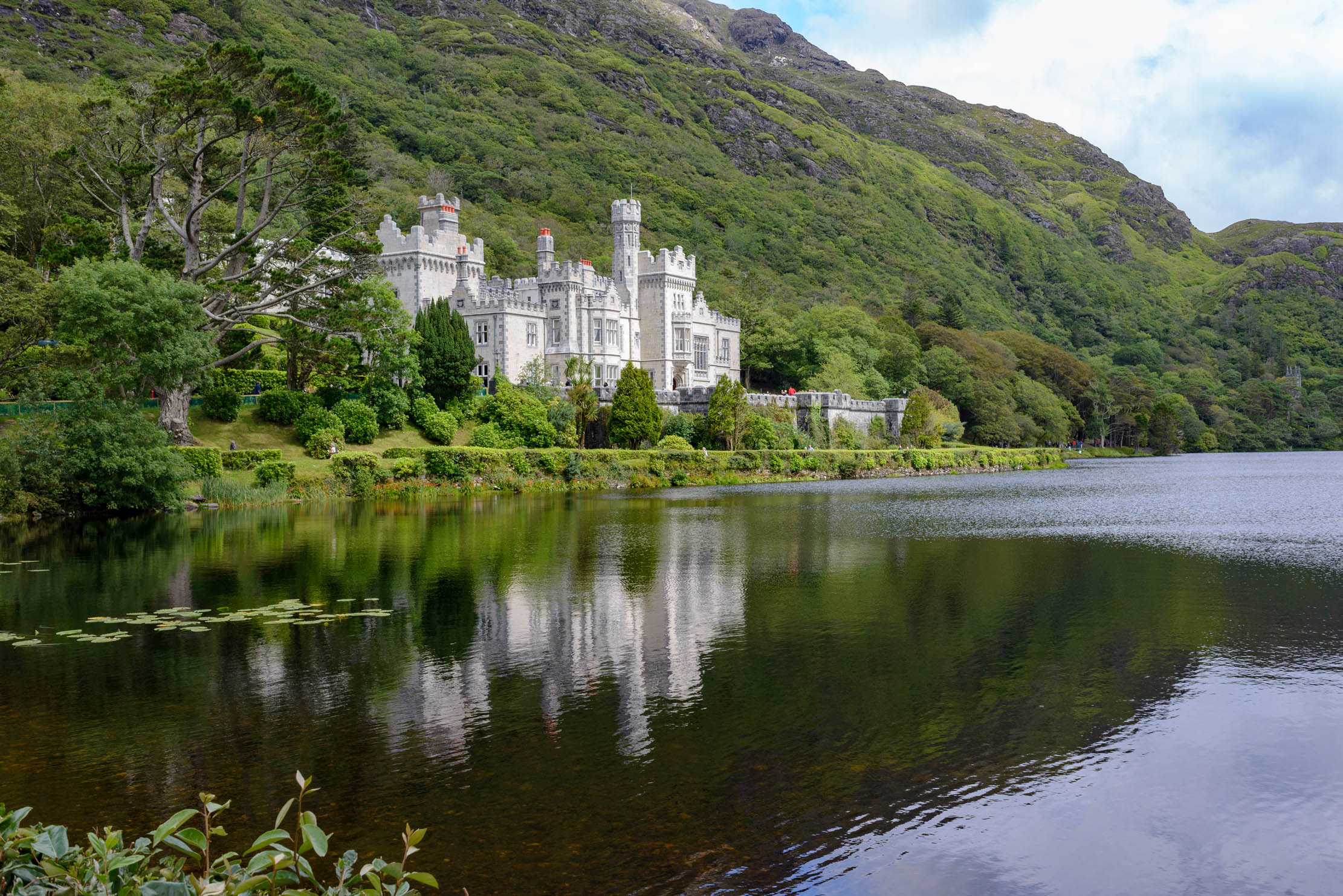
Kylemore Abbey Gardens: An Irish garden that 'is one of earth's wonders'
Thanks to the determination of the resident community of Benedictine nuns, the eight-acre garden at Kylemore Abbey Gardens in Connemara,
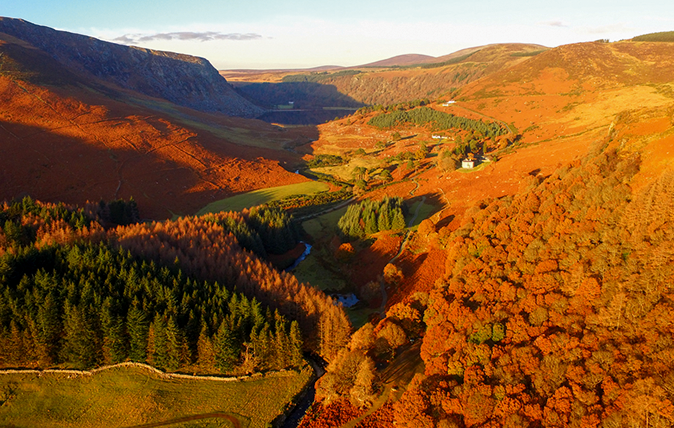
Credit: Luggala Estate, County Wicklow, Ireland
The Guinness family’s incredible estate outside Dublin goes up for sale
Penny Churchill takes an in-depth look at one of Ireland's most astonishing properties: a vast and glorious estate just a
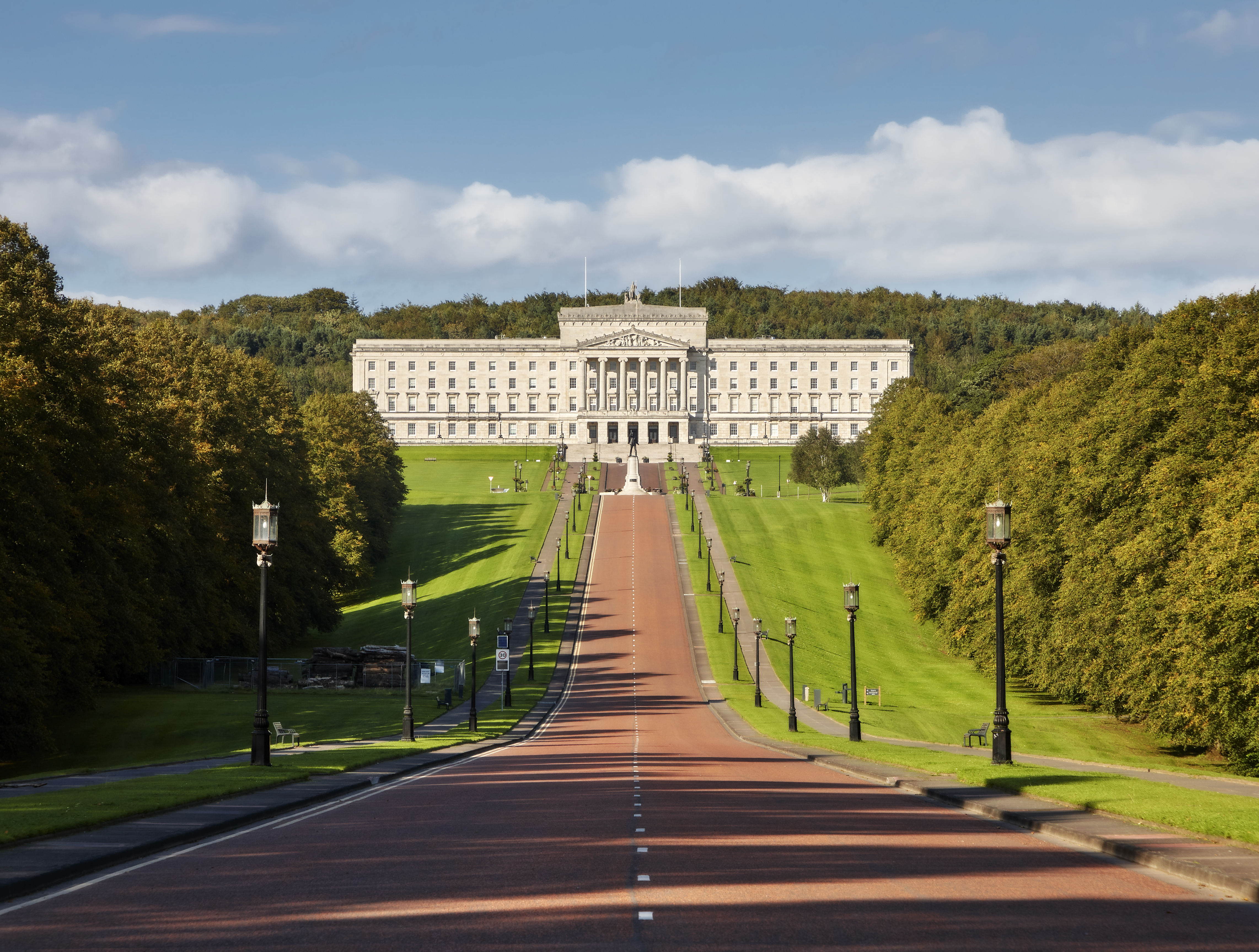
Stormont Castle: How a 'plain house' in Belfast became the seat of power
A century ago, the Stormont estate was chosen as the seat of the government of Northern Ireland. In the first


